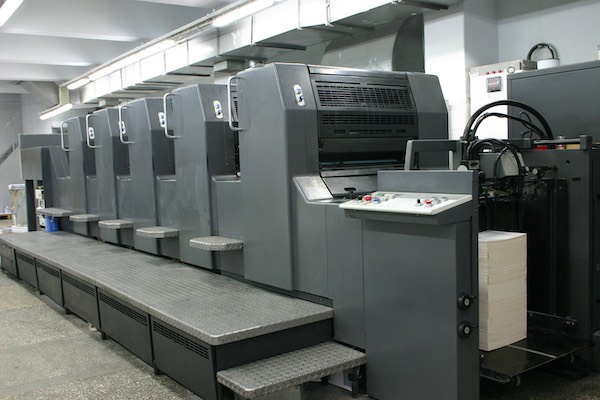Exclusive Video: Kodak President & COO Phil Faraci on Recent Bankruptcy Announcement
Kodak will continue to advance its graphic communications business as it tries to emerge from bankruptcy, treating its digital printing, plate, and workflow operations as keys to survival and future success.
This was the essence of the message from Chris Payne, Kodak’s vice president – marketing, business to business, in conversations with journalists following the announcement that the 132-year old company had filed for Chapter 11 bankruptcy protection. That move, Payne said, will not diminish Kodak’s commitment to its graphic communications customers or impact its ability to serve them.
According to Payne, graphic communications emphatically is among “the most valuable business lines” that Phil Faraci, Kodak’s president and COO, said the company would focus upon in his video briefing on the bankruptcy filing. The graphic communications segments, echoed Payne, are seen as the “key pillars” of Kodak’s plan for recovery.
As part of an organizational restructuring announced by Kodak prior to the bankruptcy declaration, the Graphic Communications Group (GCG) will combine with two other product lines (Entertainment Imaging and Commercial Film) in a newly created Commercial Segment. But, said Payne, apart from a few executive appointments connected with the restructuring, GCG customers should experience no changes in their everyday business relationships with Kodak.
Like Faraci, Payne stressed that the bankruptcy filing does not mean that Kodak has gone out of business or anticipates doing so. Large companies in other industries have emerged in stronger, more competitive shape with the help of Chapter 11 protection, Payne said.
Kodak expects to complete its reorganization under Chapter 11 sometime in 2013, he added. The company, which has obtained a $950 million line of credit from Citigroup, believes that it will have enough liquidity to operate normally during the Chapter 11 period.
Given that they represent “the future of the company,” said Payne, Kodak’s graphic communications product lines—including its toner and inkjet digital printing systems—won’t suffer in terms of R&D investment as reorganization proceeds. He also explained that Kodak’s plan to raise cash through the sale of patents and intellectual property won’t affect the evolution of these products.
The intellectual property that Kodak intends to sell, Payne said, is entirely on the consumer products side and represents only about 10% of the company’s business. In contrast to this, said Payne, “we will continue to focus on building our patent portfolio in the GCG.”
That portfolio will be on display at drupa 2012, where Kodak intends to exhibit without any change in plans stemming from the bankruptcy filing. “We will be there in full force,” Payne said.
Speaking today from GUA 2012, Kodak’s user group conference in New Orleans, Payne noted that Kodak customers were taking the bankruptcy announcement in stride. “Our customers are highly supportive, and they see that we have a future in this business,” he said.
Their aplomb may arise in part from being conditioned by a recent drumbeat of similar news about other industry-leading companies, such as the breakup of manroland and the sale of AlphaGraphics. “People are generically fairly used to ongoing consolidation activities of this kind,” Payne said.
Commentary:
It’s remarkable that reports in the general media—including the numerous stories putting a gratuitous, how-the-mighty-have-fallen spin on the travails of Kodak—have had almost nothing to say about the condition or even the existence of its graphic communications product lines. In fairness, these B-to-B verticals seldom attract much attention beyond the confines the industry to which they’re exclusively marketed. But, the days of graphic communications as Kodak’s best-kept secret probably are over, and this may be the one bright bit of news to emerge from its otherwise sobering Chapter 11 announcement.
Now that they have been identified as the keys to the future that Kodak hopes to secure, the company’s graphic production solutions should begin to receive the full measure of recognition they deserve from professional users, media observers, and shareholders alike. Thanks to its portfolio of Trillian digital plates, NexPress toner presses, Prosper and Versamark inkjet systems, and Prinergy workflows, the newly created Commercial Segment remains 100% competitive, technologically speaking, with any other vendor in the production printing marketplace. As these products come to the fore as the hallmarks of the Kodak brand, we think that the new company rising in Rochester will prove to be an even more compelling subject for journalists both inside and outside the industry to cover.








